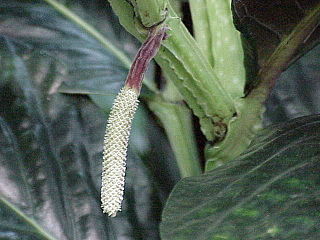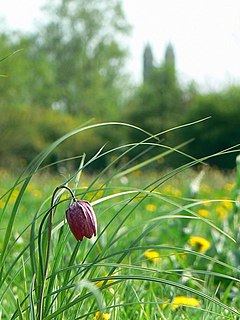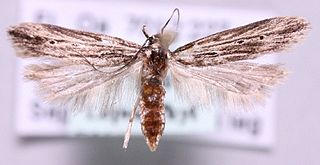
Piper, the pepper plants or pepper vines, are an economically and ecologically important genus in the family Piperaceae.
Pepper or peppers may refer to:

Roderick George Toombs, better known by his ring name "Rowdy" Roddy Piper, was a Canadian professional wrestler and actor.

Billie Paul Piper is an English actress and singer. She first appeared as a performer in Scratchy & Co. At the age of 15 she released her debut single "Because We Want To", which made her the youngest artist to enter at number one on the UK Singles Chart. Her debut album Honey to the B (1998) was certified platinum by the British Phonographic Industry. In 2000, she released her second album, Walk of Life. In 2003, she retired from the recording industry and began an acting career.

The large copper is a butterfly of the family Lycaenidae. L. dispar has been commonly arranged into three subspecies: L. dispar dispar, (single-brooded) which was commonly found in England, but is now extinct, L. d. batavus, (single-brooded) can be found in the Netherlands and has been reintroduced into the United Kingdom, and lastly, L. d. rutilus, (double-brooded) which is widespread across central and southern Europe. The latter has been declining in many European countries, due to habitat loss. Currently L. dispar is in severe decline in northwest Europe, but expanding in central and northern Europe.

North Meadow, Cricklade is a hay meadow near the town of Cricklade, in Wiltshire, England. It is 24.6 hectares in size. It is a traditionally managed lowland hay-meadow, or lammas land, and is grazed in common between 12 August and 12 February each year, and cut for hay no earlier than 1 July. This pattern of land use and management has existed for many centuries and has resulted in the species rich grassland flora and fauna present on the site.

The chestnut short-tailed bat is a bat species from South and Central America. The species is often confused with the Benkeith's short-tailed bat. It is a mainly frugivorous species that has been known to consume insects. To determine which pipers to forage on, it focuses on oder and then after proceeds to echolocate to determine position. It hunts between nightfall and midnight. Habitats include hollow trees, caves, cracks, abandoned mines, sewers, and house roofs. It does not decrease activity during full moons, only instances of turbulent weather like heavy rain. In an agricultural setting it has a higher resistance to habitat fragmentation compared to similar bat species.

Rumex hydrolapathum, the great water dock, water dock, or giant water dock, is a species of perennial herbaceous plants in the genus Rumex native to fens and freshwater banks of Europe and Western Asia. It is the tallest species in the genus, with flowering stems attaining a height of up to 2 m. It is one of the small number of decaploid organisms, containing two hundred individual chromosomes.

Spilosoma urticae, the water ermine, is a moth of the family Erebidae. It is found in temperate belt of the Palearctic ecozone like similar Spilosoma lubricipedum, but prefer more dry biotopes. So, S. urticae is more abundant in steppes and it is the single Spilosoma species in Central Asia.

The Palawan bearded pig is a pig species in the genus Sus endemic to the Philippines, where it occurs on the archipelago of islands formed by Balabac, Palawan, and the Calamian Islands. It is 1 to 1.6 m in length, about 1 m (3.3 ft) tall and weigh up to 150 kg (330 lb).

Xylena vetusta, the red sword-grass, is species of moth of the family Noctuidae. The species was first described by Jacob Hübner in 1813. It is a found in the Palearctic ecozone from north-western Africa through Europe and Asia up to central Siberia. In the north, it is found up to the Arctic Circle and Iceland.

Calybites phasianipennella is a moth of the family Gracillariidae. It is known from all of Europe and most of Asia.

Piper borbonense is a species of plant in the genus Piper. A close relative of black pepper, its berries are used as a spice known as voatsiperifery, which comes from voa, the Malagasy word for fruit, and tsiperifery, the local name of the plant. A wild pepper, it grows in Madagascar.

Ostrinia palustralis is a species of moth in the family Crambidae described by Jacob Hübner in 1796. It has a transpalaearctic distribution. In Europe, it is found from Sweden south to Italy and east through eastern Europe to Russia. However, it is absent from the western part of the Balkan Peninsula.
Pyropteron minianiforme is a moth of the family Sesiidae. It is found on the Balkan Peninsula, Crete, Cyprus and in Ukraine. It is also found in Turkey, the Caucasus, the Black Sea region and the Kopet-Dagh.

Scopula corrivalaria is a moth of the family Geometridae. It is found from Japan, Korea, China and the Russian Far East through Siberia and Russia to western Europe. In Europe, it ranges from northern Central Europe to the Mediterranean. The habitat consists of marshes and wet meadows.

Monochroa palustrellus, the wainscot neb, is a moth of the family Gelechiidae. It is found in from western, central and northern Europe to the Ural Mountains and southern Siberia. The habitat consists of waste ground, dry pastures and sand-dunes.
Guineesine is an alkaloid isolated from long pepper and black pepper.

















